A sculpture of the Buddhist deity Fudo Myo-o, known as the Kumano Magaibutsu. It is about eight meters tall.
On the Kunisaki Peninsula, Ninmon Bodhisattva, an avatar of the god Hachiman, is said to have founded the temples of Rokugo-Manzan, and Saint Horen of Usa Hachiman Miroku-ji Temple is said to have obtained a wish-fulfilling jewel through ascetic practice on Mt. Hiko. Although the culture of Shinto-Buddhist syncretism suffered a major blow as a result of the Meiji Restoration, this faith and culture continue to be passed down, and it seems its time for restoration may now have come.
Photos by Naoya Furuta
Rokugo-Manzan Greets Its 1300th Anniversary
The Kunisaki Peninsula, in Oita Prefecture, is covered in a near-perfect circle of volcanic terrain, at the heart of which rises the 721-meter Mount Futago, the hub from which the peninsula’s hills and valleys stretch out radially toward the sea. In the valleys that form the tendons linking this mountain to the water there, six townships formed, and at the same time, many temples were opened. These temples, belonging to the Tendai sect of Buddhism, are known collectively as the Rokugo-Manzan temples.
Many of the Rokugo-Manzan temples are said to have originally been founded by the Bodhisattva Ninmon in 718 CE, meaning they turned exactly 1300 years old in 2018. The story goes that Ninmon opened 28 temples at various points across the Kunisaki Peninsula, made 69,000 statues of Buddha, and also created various other works such as the Kumano Magaibutsu, a set of stone relief sculptures of Buddha.
The theories that currently hold sway have him more as a legendary figure than a human, and Ninmon has also been said to have been an incarnation of Hachiman, the Shinto god of war, who is worshiped at Usa Jingu, a shrine located at the foot of Mt. Omoto, at the entrance to the Kunisaki peninsula. Usa Jingu is the chief shrine of Hachiman, which is known to everyone in Japan and has 44,000 shrines across the nation. Hachiman is believed to have begun as the patron god of the Usa family of hereditary priests. Still, he grew more powerful in the Nara period because of his connection to the central government for reasons such as prophesying the construction of the Great Buddha of Todaiji temple. He was later granted the title of “Great Bodhisattva Hachiman” by the Imperial Court.
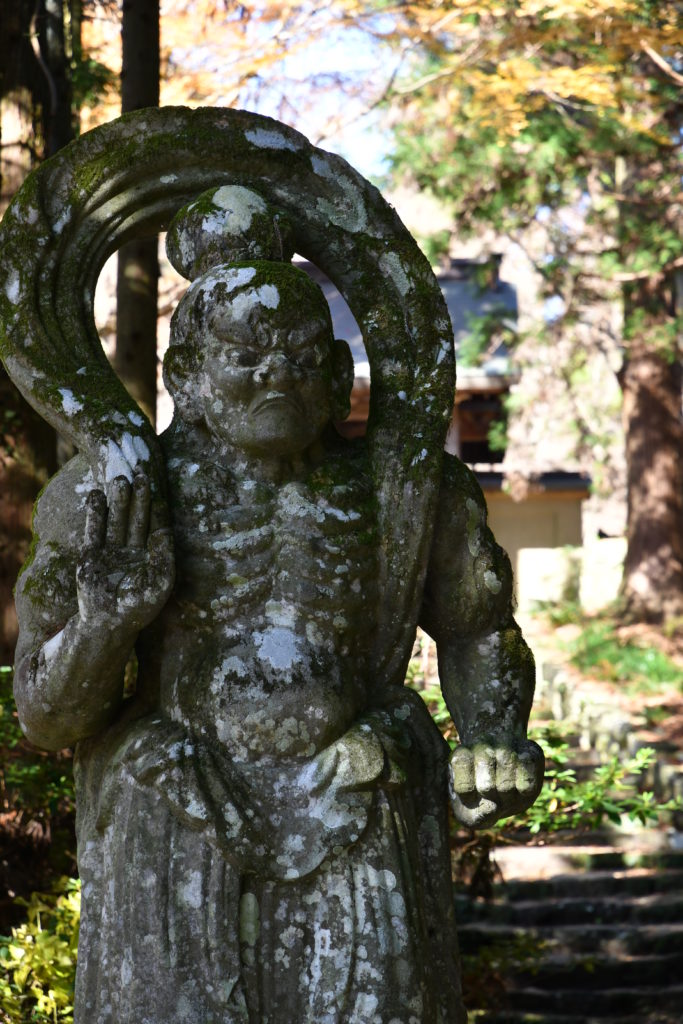
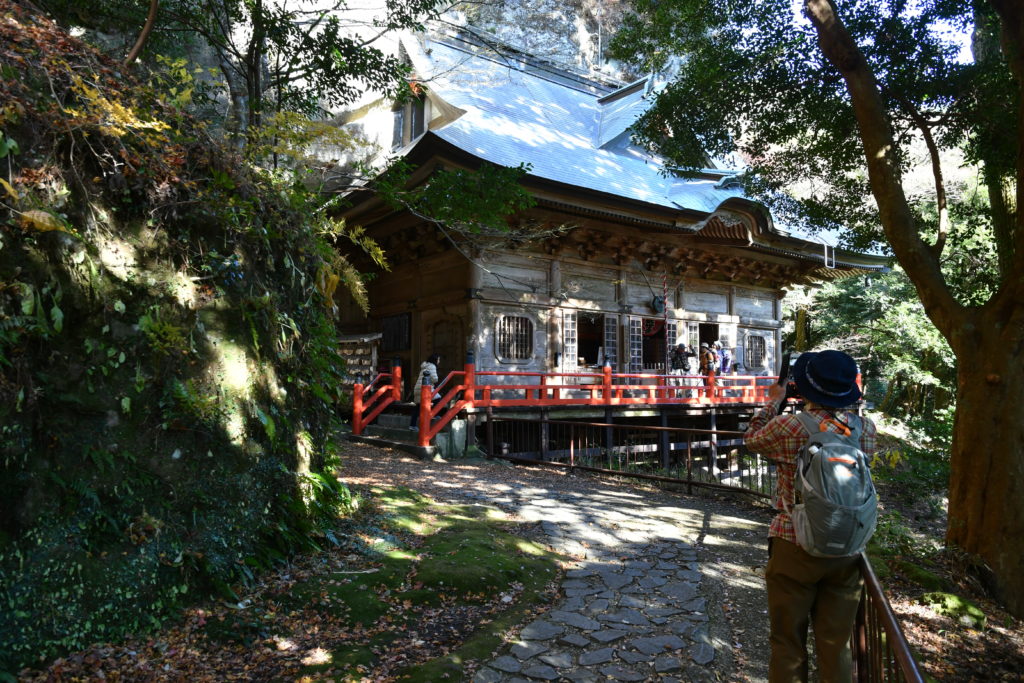
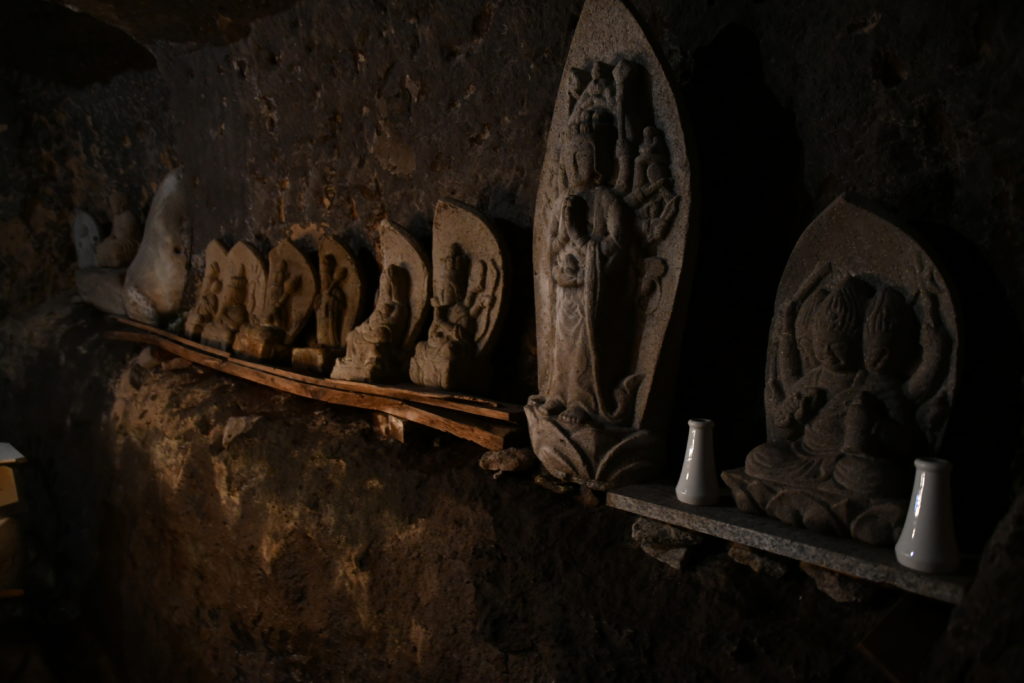
A Unique Shinto-Buddhist Syncretic Culture Flourishes on Kunisaki Peninsula
As one might expect, given the history it is supposed to have had, a unique culture of Shinto-Buddhist syncretism, combining Tendai esoteric Buddhism with the worship of Hachiman, took shape on the Kunisaki Peninsula. At their peak, temples on the peninsula numbered 65. These formed three groups: “Mountain Front,” for scholarship; “Mountain Center,” for ascetic practice; and “Mountain Rear,” for missionary work. These were further divided into front temples and back temples.
Futago-ji, a temple on the slopes of Mt. Futago, located at the center of the Kunisaki Peninsula, is a Mountain Center temple focusing on ascetic practice. Since the Edo period (1603-1867 CE), it has prospered as a supervisory temple over all of the mountains. It is symbolized by a stone statue of a Nio guardian, which stands in front of its gate.
Futago-ji is said to have been opened in 718 CE by Ninmon Bodhisattva, the incarnation of Hachiman. Midway toward the temple’s rear hall, there stands a Shinto-style shrine gate, telling modern people about how Shinto and Buddhism fused in the past. In the rear hall, which is carved from stone, a “Double Manifestation” is enshrined, combining both Ninmon Bodhisattva and Great Bodhisattva Hachiman.
Fuki-ji Temple, located in the Tashibufuki district of the Kunisaki Peninsula, is said to have been founded in 718 CE by Ninmon Bodhisattva, just like Futago-ji Temple. Its Great Hall, where Amida Nyorai Buddha’s seated statue, the temple’s primary object of worship, is enshrined, was constructed during the Heian Period (794-1185 CE). It has been designated a National Treasure, and it is the one and only Amida Hall in western Japan. In the past, the Kunisaki Peninsula was dotted with 800 large and small halls, stone Buddhas, and stone towers, including these, in its temples, grottoes, and priests’ quarters.
Mine-iri is one example of an event fostered by Rokugo-Manzan, which communicates to people this unique Shinto-Buddhist syncretic culture. Rokugo-Manzan Mine-iri is an event in which participants follow the footsteps of Ninmon Bodhisattva dotted across the Kunisaki Peninsula, said to have been started by a 9th-century ascetic monk Nogyo. The story goes that Ninmon Bodhisattva, in the form of an elderly monk, appeared to Nogyo, who had spent more than 30 years throwing himself into doing ascetic practice on Mt. Rokugo, taught him a path around Rokugo-Manzan, and told him to patrol around Ninmon’s holy sites.
There is one recorded instance of Rokugo-Manzan Mine-iri during the Middle Ages, and eight occurrences during the Edo period. However, the Kunisaki Peninsula culture suffered a major blow from the “Abolish Buddhism” movement, which began going to extremes following the Meiji government’s enactment of policies to separate Shinto and Buddhism. Mine-iri was temporarily banned during the Meiji period, but it achieved a miraculous resurrection following the Second World War. In particular, in 2017, in advance of the following year’s 1300th anniversary, Mine-iri practitioners visited all 183 spots that Ninmon Bodhisattva is supposed to have walked. It was the first time this had been done since the Showa era (1926-1989 CE).
Mine-iri, as performed by Buddhist monks, begins with the ritual gathering and burning of sticks to secure a blessing, performed at Usa Jingu on April 2, and continues for about one month, until April 30, when the same ritual is performed at Futago-ji Temple by way of a memorial service.
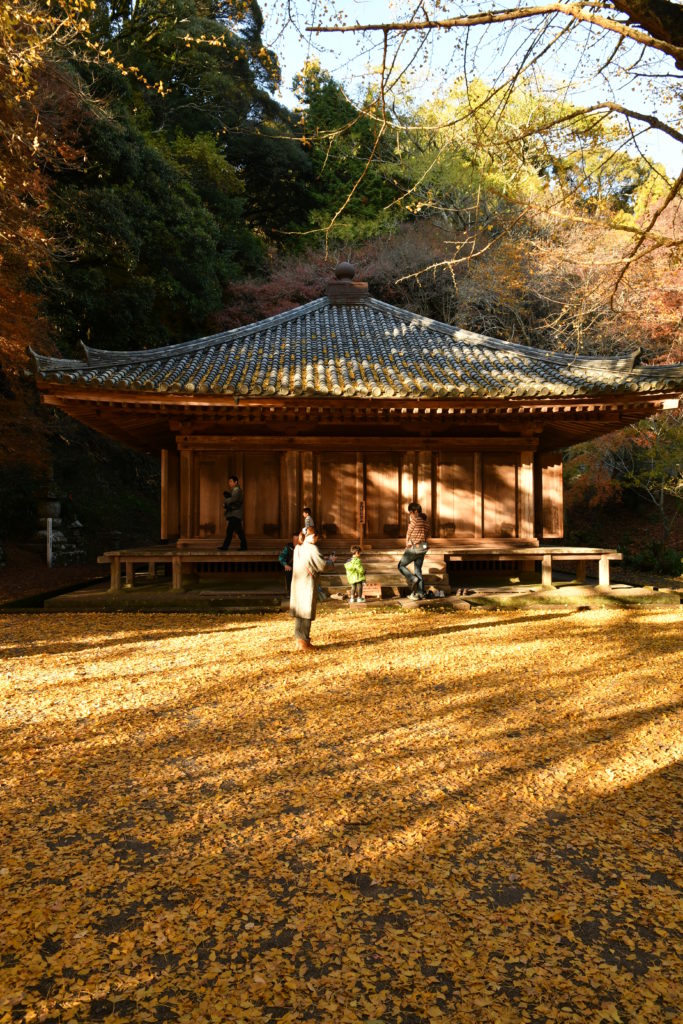
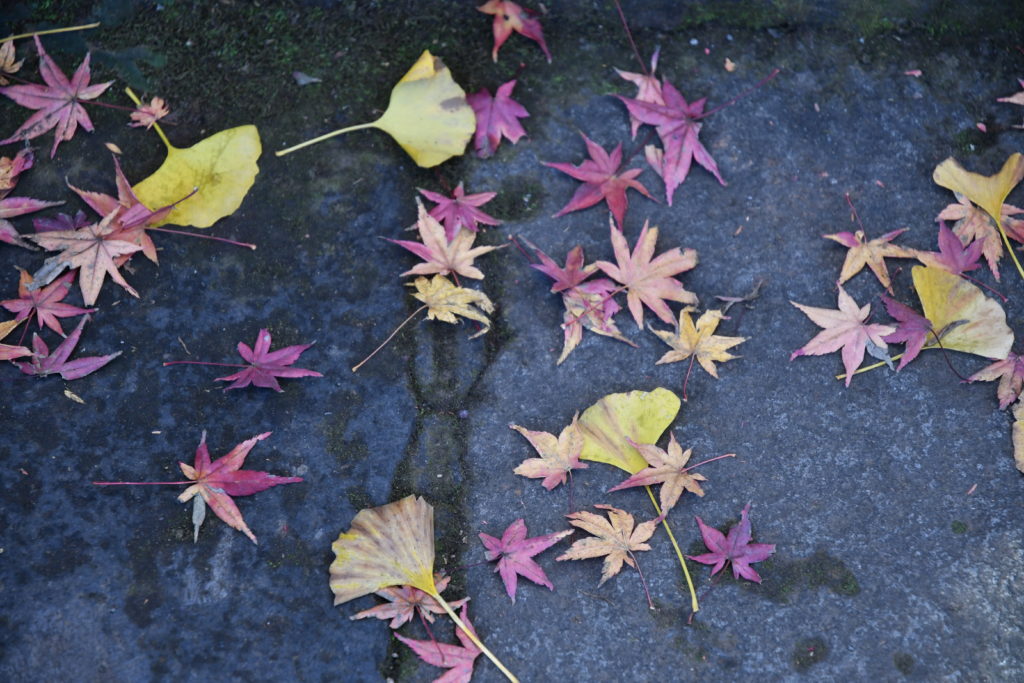
Modern-Day Mine-iri: Kunisaki Peninsula’s Minemichi Long Trail
In recent years, a nature trail has been set up, including promenades and mountain paths, based on the course used for the long-practiced ritual of Rokugo-Manzan Mine-iri, so that people can enjoy walking or trekking on this route. This trail, named the Minemichi Long Trail, currently spans a 135-kilometer route, divided into ten sections, running between the Kumano Magaibutsu and Futago-ji Temple. By walking the length of this trail, which takes about ten days, visitors can enjoy the Kunisaki Peninsula’s still-remaining nature, culture, and history. This trail has attracted attention as a new way for the culture of Rokugo-Manzan to continue to be passed down.
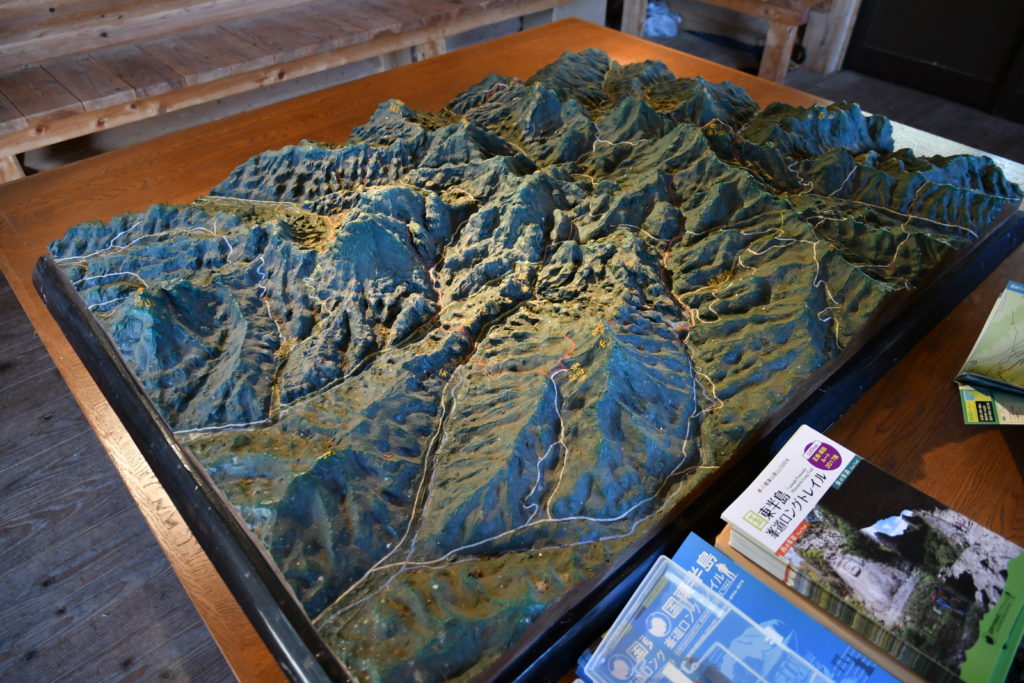
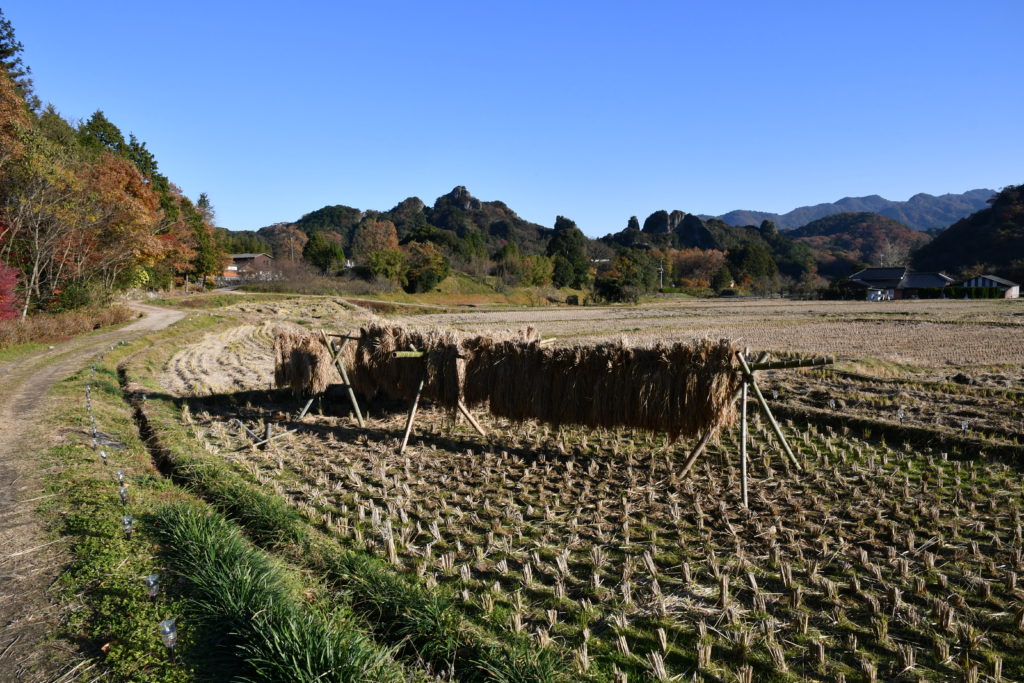
Mount Hiko Is Counted As One of the Three Great Mountains of Shugendo
Mount Hiko, one of the bases of the Buddhist-Shinto syncretic Shugendo sect, is another place in northern Kyushu which has connections to Usa Jingu. Mt. Hiko, alongside Mount Haguro in Yamagata and Mount Omine in Nara, is known as one of Shugendo’s Three Great Mountains. In the Edo period, worship of Mt. Hiko flourished to the extent that it spread throughout the entirety of Kyushu, and there were said to be “3,800 monks on Mt. Hiko.” This referred to the 3,000 people who lived their lives on the mountain alongside 800 monks’ huts.
In this way, Mt. Hiko prospered as a major base for Shugendo, but just like Rokugo-Manzan, it was badly harmed by the Meiji-era policy of dividing Shinto and Buddhism. Shugendo was broken up, and many of the Buddha statues, altars, and ritual implements in the temples on Mt. Hiko were destroyed or lost because of the movement to abolish Buddhism.
Hikosan Daigongen-sha Shrine was renamed Hikosan Jingu. The Great Auditorium of Reisen-ji Temple was refurbished into the shrine’s hall of worship: its Buddha statues were removed, and its name changed to Hoheiden.
Mountain monks became Shinto priests or laymen, and many of them left Mt. Hiko. Of the 800 monks’ huts that once stood on the mountain, almost none are now, and only the stone walls that run beside the road, the ruins of the houses, and the remaining gardens, still remind of that past glory.
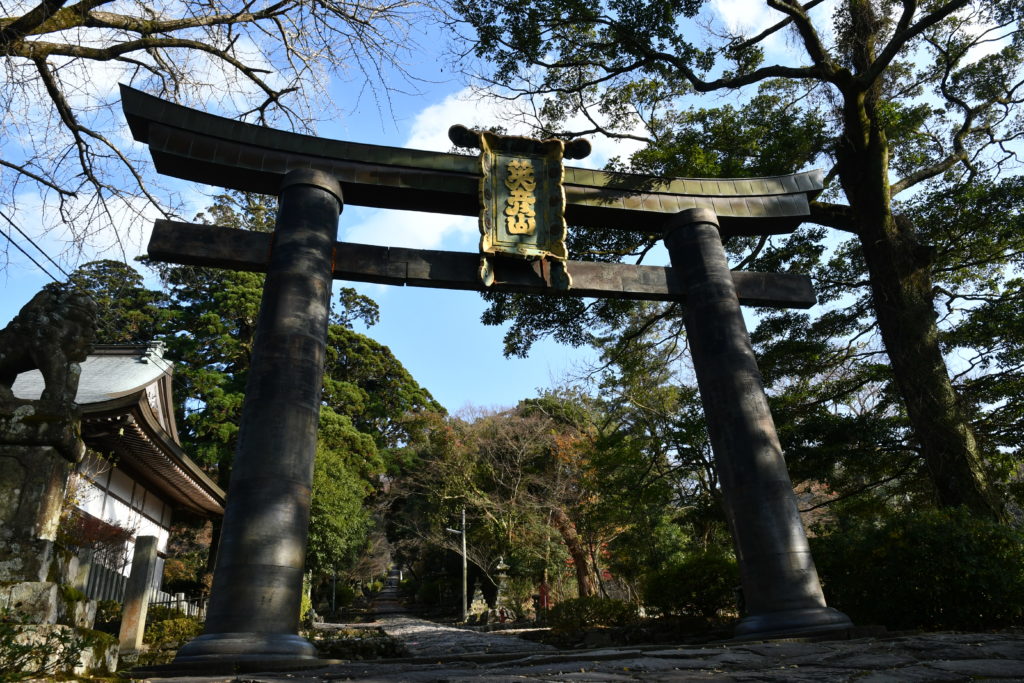
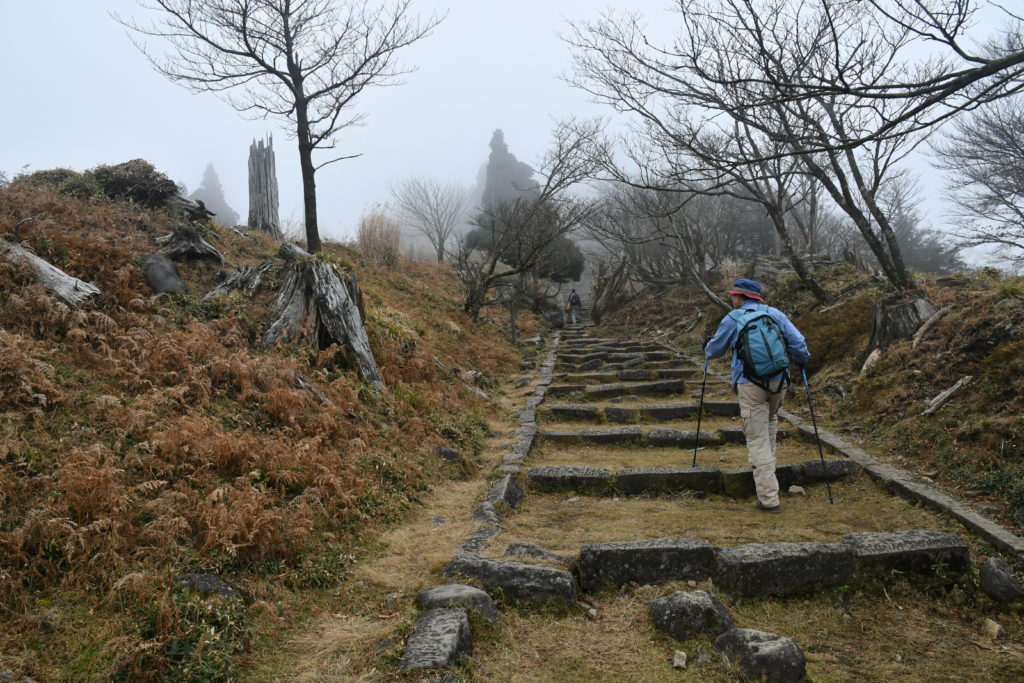
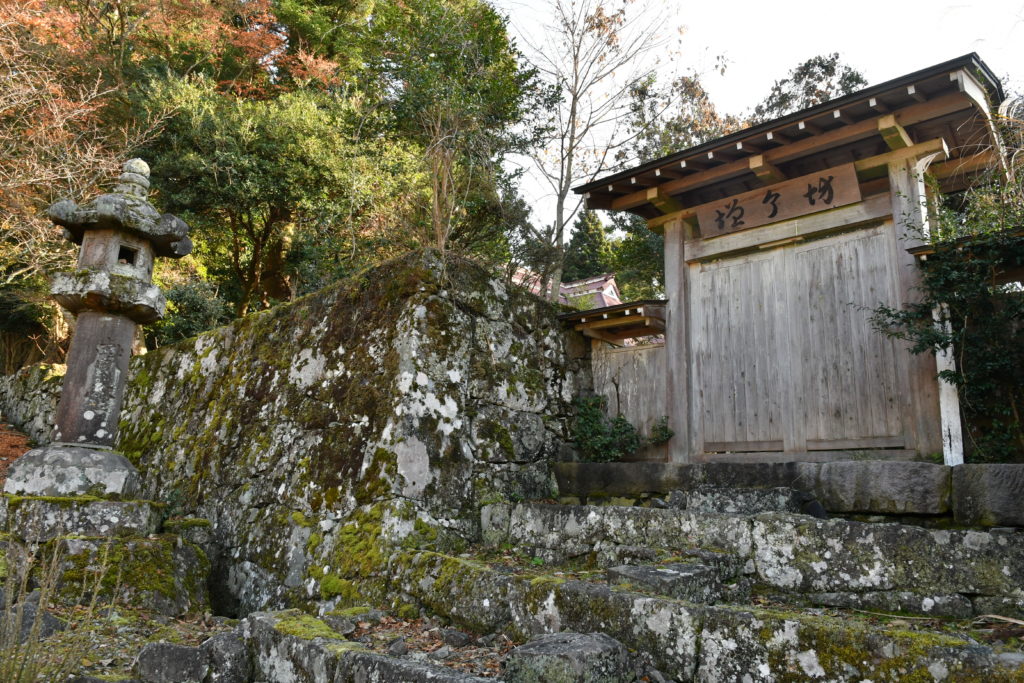
The Links between Mt. Hiko and Usa Jingu
The temple on Mt. Hiko is believed to have originally been founded in 531 CE by Zensho, a monk from China’s Northern Wei dynasty. Shugendo founder En no Gyoja, who was exiled to Izu Oshima Island, is said to have later made a pilgrimage to this temple. Since time immemorial, the mountain’s name had been written with the Chinese characters 日子, meaning “Child of the Sun,” but in 819 CE, it was changed to the character 彦, meaning “Boy,” by an edict of Emperor Saga, although the pronunciation remained the same. During the Edo period, the temple won a dispute with Kyoto’s Shogoin Temple over which of the two temples was home to the primary priest family, and Mt. Hiko was confirmed as the place where Shugendo split from Tendai Buddhism. Therefore, in 1729, it is recorded that Emperor Reigen had a new character, 英, meaning “First,” added to the name, though the pronunciation still was not changed.
Like Rokugo-Manzan, Mt. Hiko is said to have connections to Usa Jingu. That is, after doing ascetic practice in a cave known as the “Jewel Room” on Mt. Hiko, Saint Horen, the head of Miroku-ji Temple (a Buddhist temple within Usa Jingu), was granted a wish-fulfilling jewel which Mt. Hiko’s manifestation of Buddha had brought back from China. Horen is said to have offered up that jewel to the Great Bodhisattva Hachiman.
Incidentally, Miroku-ji, the temple affiliated with Usa Jingu, was also abandoned due to the Meiji Restoration. It was on the grounds currently occupied by Usa Jingu, and it is said to have been magnificent, outfitted with a layout of temple buildings like that of Nara’s Yakushi-ji Temple. In the Heian period, it contained the most extensive manor in Kyushu.
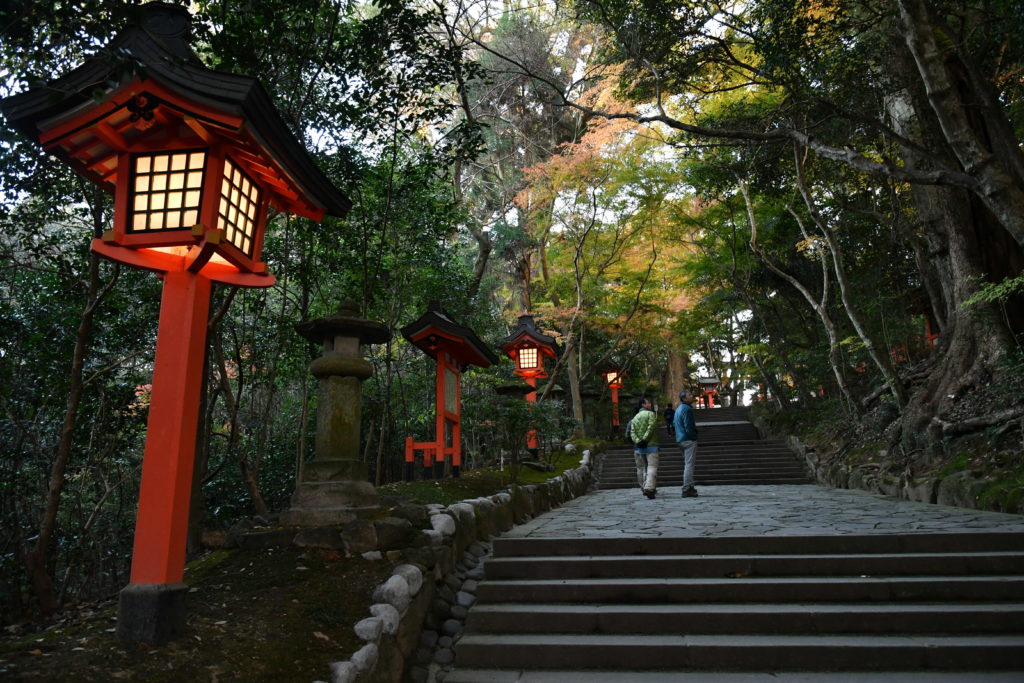
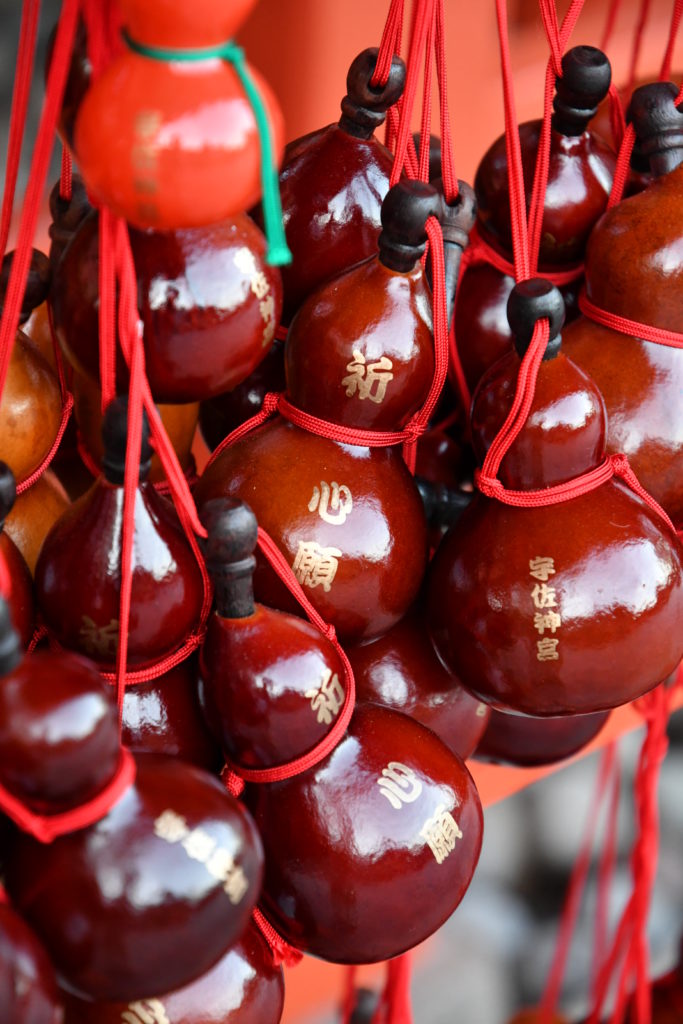
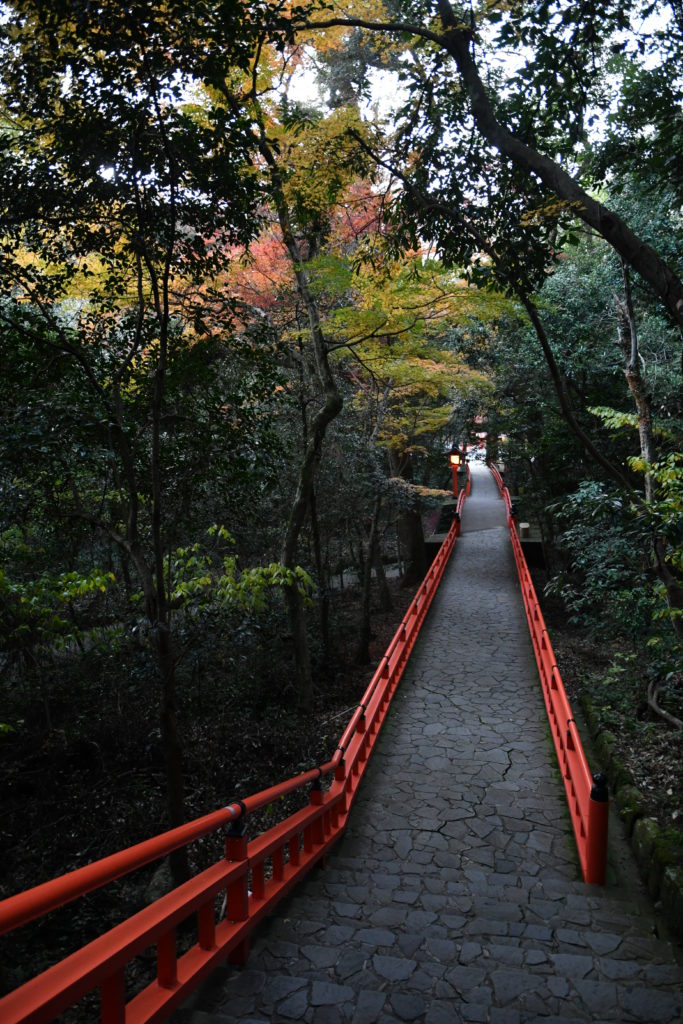
The Revival of Mine-Iri on Mt. Hiko
As seen in the story of Saint Horen, ascetic practice on Mt. Hiko was once performed by secreting oneself in a natural hole, known as the Ancient Cave, which was into the side of the mountain by erosion and weathering. However, when the Muromachi period arrived in the 14th century, mine-iri, in the form of groups traveling around the nearby mountain peaks, began to be practiced, with the goal of achieving symbolic death and resurrection.
Mt Hiko had three mine-iri seasons a year: Spring Peak, Summer Peak, and Autumn Peak. At each of these, 48 spots, known as “inns,” at which visitors could perform ascetic practices, were established.
Japan’s defeat in the Second World War brought about the abolition of so-called “State Shinto.” This was a big blow to Mt. Hiko, and mine-iri there was suspended for a long time. The practice was finally revived in the late 1960s, albeit in a simplified form.
In recent years, a variety of initiatives have been started to revive mine-iri and Shugendo even on Mt. Hiko. And part of the mine-iri path on Mt. Hiko has been designated a Kyushu Nature Trail by the Ministry of the Environment, opening the door for new people to use it as a nature walk in the same way the Mt. Hiko serves as the doorway to the Kunisaki Peninsula. It seems that, even on Mt. Hiko, people are groping toward new efforts to revive Shugendo and build on the culture it is based on.
Translated from the original article: Naoya Furuta (2018) Mt. Hiko, Kunisaki Peninsula: A Natural Holy Place and Pilgrimage Road, Created from The Historic Fusion of Buddhism and Shinto Chiikijin vol.26, pp. 64-69

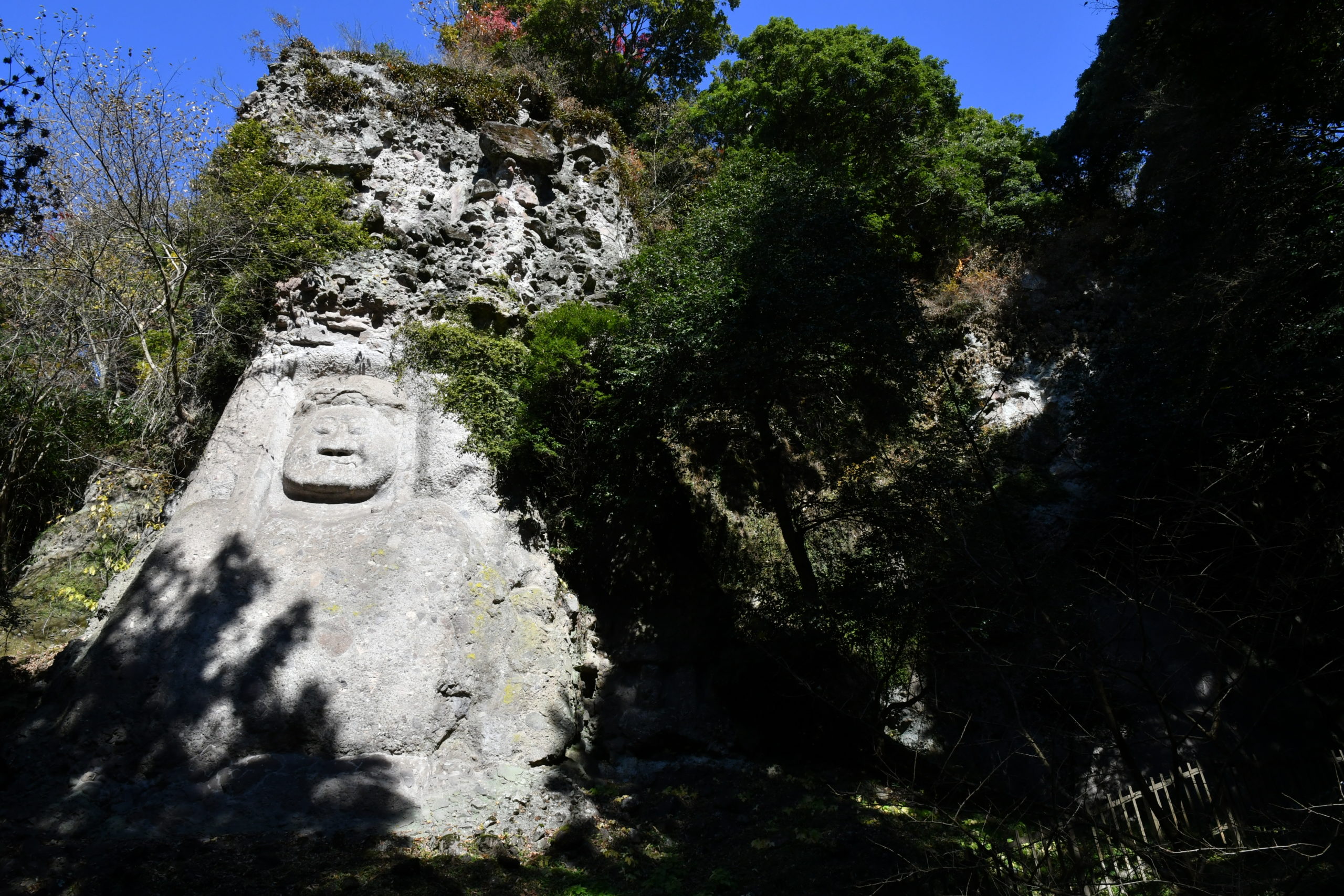


コメント